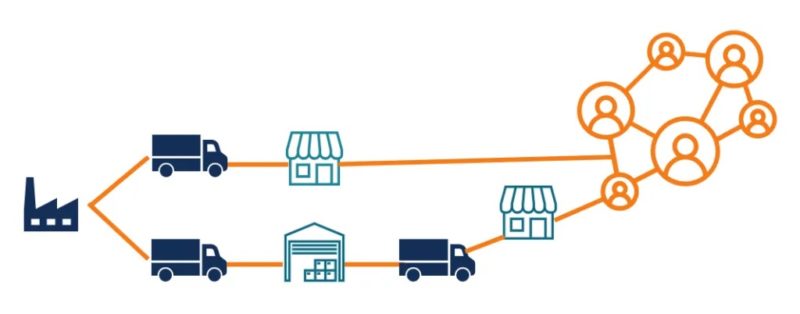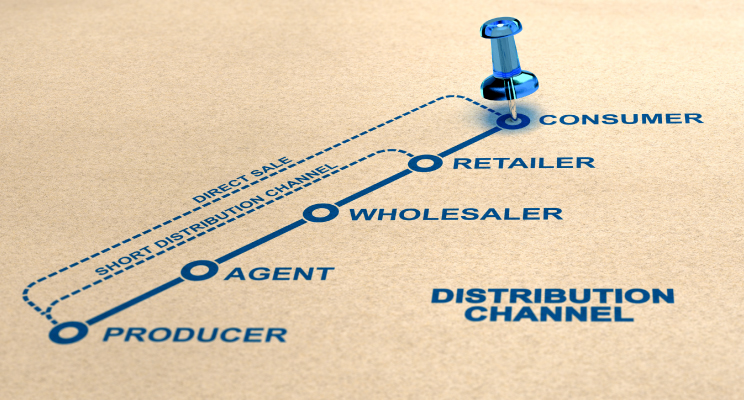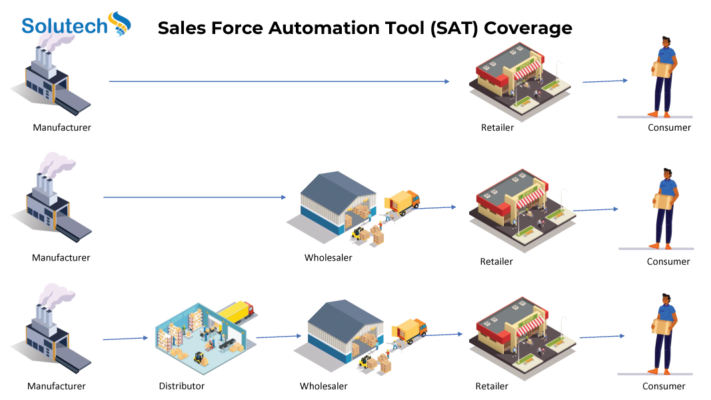If you thought that making a product that appeals to the market is the hardest part, think again.
Manufacturers know that aside from aggressive marketing, availing your product to the consumer is the third most critical
part and can be difficult and confusing if not done the right way.
Remember, you are as a good as what your customers say about you and that is determined by:
– The quality of your product
– How your product makes a customer feel
– How consistency you are
– Your customer experience
and
– How efficient and accessible you are
Stressing on the last point, this is why you need a solid distribution strategy.
Before you can be able to determine a strategy that best suits your business, let us first go over the basics in product distribution.
What is Product Distribution?
How products move from the point of manufacturing through various sales channels to reach the
purchasing customer is called product distribution. This also involves transportation, packaging, and delivery.
The reason as to why creating an effective strategy is critical is because the availability of your
products to your end consumer is highly dependent on it.
It is through your end consumer in mind that you can determine how you will make their purchasing process easier and this
you can only get from mapping out their buyer journey.
Distribution channels
Essentially there are two main channels, namely:
1) Direct Distribution
Just as the name suggests, this model eliminates all the middlemen. Manufacturers sell directly
to the customers.
With no third-party, the manufacturer is faced with the responsibility of handling
everything. Tasks such as packaging, pricing, marketing and what a view are now handled by one
person.
Though this type requires a lot of effort and time, results can be quite enticing if one is able
to manage distribution costs and attain profitability.
Other advantages include:
– Full control of customer experience
– Accurate feedback on products as it is first hand.
– Effective market testing grounds
2) Indirect Distribution
In indirect distribution, middle-men( wholesalers, retailers, distributors) are now brought into the equation.
They assist in the placement of your products by positioning themselves as dealers of your
products on your behalf.
They usually take a huge chunk of responsibility of how your product performs in the market. in the they are still your customers.
Despite so, it should be in your best interest to train them on how to sell your products and offer essential marketing materials to support them as they do so.
Distribution Channel Intermediaries
1. Distributors
Usually have exclusive rights in distributing products in a defined geographical territory.
They are given the responsibility of penetrating the market to obtain market coverage on behalf
of the manufacturer.
Due to the nature of their business relationship with the producer, they have a strong affiliation and
assume more responsibility in making sure that products are selling and are at peak performance in the market.
2. Wholesalers
Buy products in bulk from manufacturers or distributors at a lower price than the retail price then
resell to other middlemen in small quantities at a profit.
In other instances, though very rare, you will find them selling directly to the end consumers.
3. Retailers
Supermarkets, shops, kiosks, mini-marts.. etc. These outlets are usually the final step in the
channel. This is where consumers purchase items from. After buying goods from wholesalers, distributors
or other times manufacturers they resell them to consumers at a marked up price for profitability gain.
Depending on the product you sell, a distribution strategy can be formulated. There are three distinct types
of distribution ways.
A) Intensive Distribution
Products are placed at many outlets as possible with the goal being to
reach as many customers as possible. These products rarely require effort to sell
and are categorized as routine purchases. Picture walking into a shop to buy chewing gum.
You might have walked in wanting to get a P.K but since it is not available, you are comfortable
walking out with Fresh as substitution is an option. Brand loyalty is rarely talked about with such purchases hence making it
easy to substitute. Now do you get the gist of having your product on standby?
B) Exclusive distribution
Here, manufacturers cut a deal or enter into an agreement with a retailer/distributor/outlet by
giving them exclusive rights to sell their products. This is mostly suited for luxurious products.
When expanding into new markets, manufacturers can leverage the distributors who have already built presence
in their target markets. This way, they get to understand the local customer base and serve them accordingly.
The manufacturer has an upper hand in such a setting as they can dictate prices and how their brand is laid out.
This helps them maintain quality and exclusivity.
A good example would be DT Dobie Kenya as the official and authorized distributor of Mercedes Benz.
C)Selective Distribution
Is a middle ground between exclusive and intensive with the focus being on using a limited
number of outlets at specific locations to sell products. Here the producer can monitor
the outlets that perform the best and work on bettering them, obtaining optimum market coverage.
With the aforementioned intermediaries that already have a relationship with your end-users,
engaging with them to reach your customer base is strongly advised.
Another obvious factor to consider when choosing the right strategy is your product.
The nature of your product and your consumer buyer journey differentiates the distribution method
you should take. As explained earlier, the three methods create three types of consumer
purchase decisions. Referring to the examples given one should be able to categorize and
plan according to the market each appeals to.
AUTOMATING DISTRIBUTION
Whether you are a manufacturer doubling as a distributor or a distributor looking to
make your distribution process efficient, make technology your friend.
Visibility of real-time execution of your distribution efforts provides you with the
valuable opportunity to gather actionable data on your products movement and how to strategize.
Take an example whereby you do not have an inventory management system. Data manually comes in
from multiple data points instead of a centralized source of truth. This limits your
ability to rely on the information provided as it may be accurate and we all know inaccurate planning is a disaster waiting to happen.
Invest in a well laid out but simple solution to help you strategize and discover new opportunities that can contribute to your
business efficiency and growth. Imagine having the ability to understand customers, different shop categories and sales trends with real-time efficiency. This is a huge advantage when it comes to distribution.
If you would like to learn more about data and insights that can improve your distribution process and ensure successful
movement of goods from the point of manufacturing contact us today


